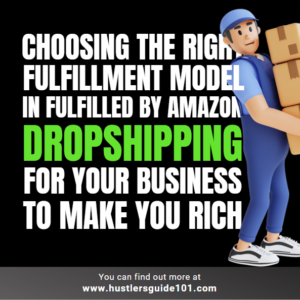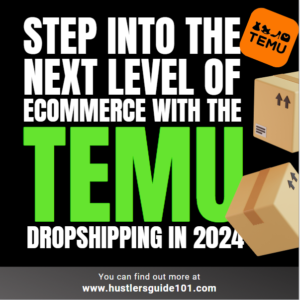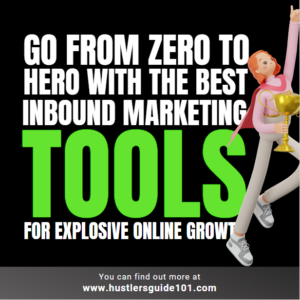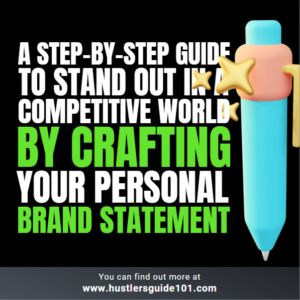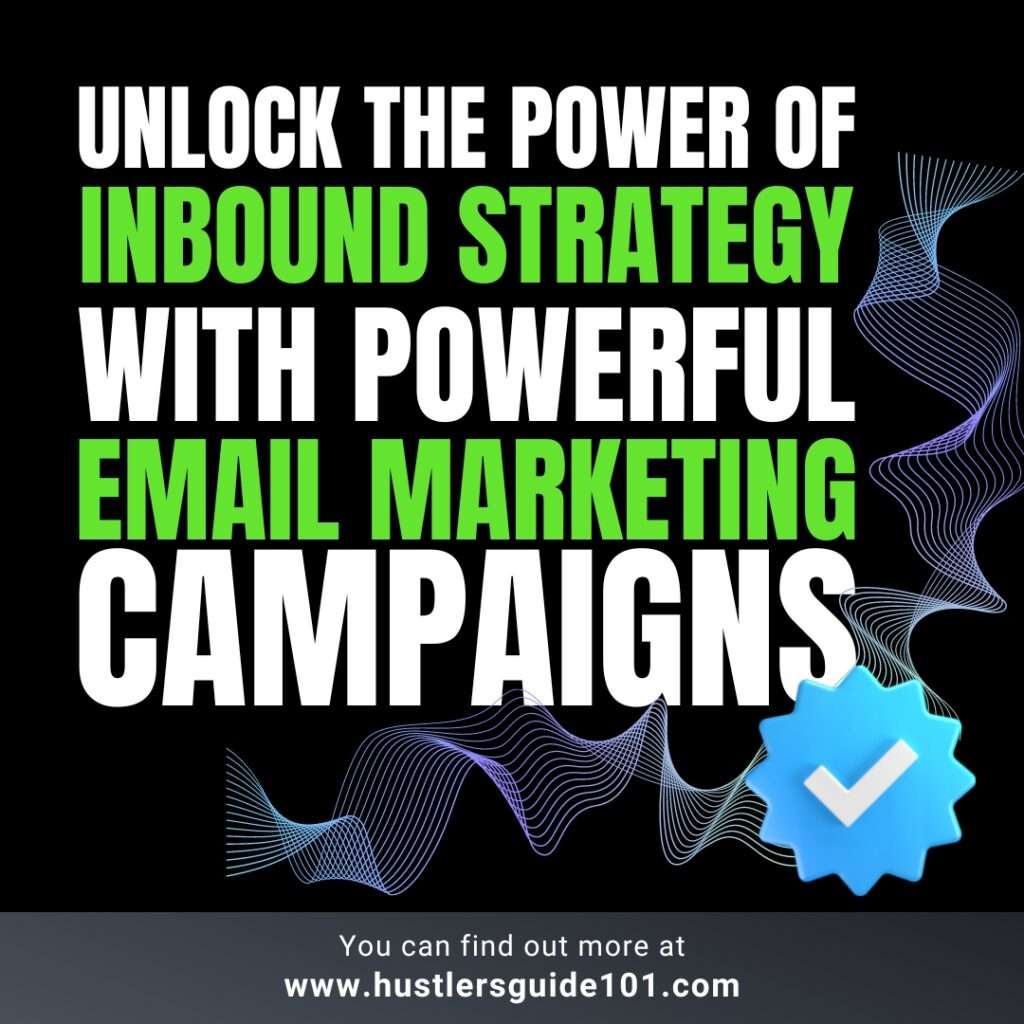
Do you feel like your inbound marketing strategy is missing something? Are you struggling to see results and drive conversions? Wondering how can email marketing fuel your overall inbound strategy? If so, you’re not alone.
When integrated correctly, email marketing can help you build relationships with your audience, drive traffic to your website, and increase conversions. And the best part? It’s affordable, effective, and you can easily measure your ROI. Let’s dig deep into how can email marketing fuel your overall inbound strategy to the next level.
Understanding the Inbound Marketing Methodology
Understanding the Inbound Marketing Methodology is key to creating an effective inbound marketing strategy.
Inbound marketing is a customer-centric approach to marketing that focuses on attracting, engaging, and delighting customers through relevant and valuable content.
Let’s take a deep look into the understanding of marketing methodology.
Definition of Inbound Marketing
Are you curious about what inbound marketing actually is? Inbound marketing is all about attracting, engaging, and delighting customers through relevant and valuable content.
It’s a customer-centric approach that focuses on earning the attention of potential customers, rather than buying it through traditional outbound marketing methods such as advertisements and cold calls.
Key Principles of Inbound Marketing
Inbound marketing is based on four key principles:
- Attracting visitors by creating relevant and valuable content
- Converting leads by offering something of value in exchange for contact information
- Closing customers by building trust and demonstrating the value of your product or service
- Delighting customers by providing exceptional experiences that keep them coming back for more
Understanding the Customer Journey
One of the key components of inbound marketing is understanding the customer journey. The customer journey is the process that a customer goes through in order to make a purchase.
It includes:
- Awareness stage: Understanding the needs and pain points of potential customers
- Consideration stage: Offering solutions and building relationships with potential customers
- Decision stage: Closing the deal and securing the customer’s business
Importance of Inbound Marketing in Today’s Digital Age
In today’s digital age, consumers are bombarded with advertisements and sales pitches from every direction.
As a result, traditional outbound marketing methods are becoming less and less effective. Inbound marketing, on the other hand, is growing in popularity because it provides value to customers and builds relationships with them.
By focusing on creating relevant and valuable content, you can establish your brand as a trusted authority in your industry, which will help you attract and retain customers for the long term.

The Benefits of Integrating Email Marketing into Your Inbound Strategy
Email marketing can be a powerful tool for businesses looking to fuel their overall inbound strategy.
When integrated with your inbound marketing efforts, email marketing can help you reach your target audience with relevant and valuable content, generate leads, and drive conversions.
Here are some of the key benefits of integrating email marketing into your inbound strategy:
Increased Reach
By sending targeted email campaigns to your audience, you can reach a wider group of people than you would with other inbound marketing tactics alone. This can help you increase your reach and build relationships with your target audience.
Lead Generation
Email marketing can be a great way to generate leads by offering something of value in exchange for contact information. This can help you build your email list and create opportunities to follow up with leads in the future.
Increased Engagement
By sending targeted and relevant email campaigns, you can increase engagement with your target audience. This can help you build relationships, establish trust, and ultimately drive conversions.
Better ROI
When compared to other marketing channels, email marketing often has a high return on investment. This is because it is relatively inexpensive to send an email, yet it can generate a significant number of leads and conversions.
Email Marketing Tactics in Inbound Strategy
There are many different email marketing tactics that businesses can use as part of their inbound strategy.
By using a combination of these tactics, businesses can effectively leverage email marketing as part of their inbound strategy.
Creating relevant and valuable email campaigns that are designed to address the needs of your target audience can increase engagement, generate leads, and drive conversions for your business.
Here are some of the most common tactics that businesses use to drive results with email marketing:
Welcome Emails
These are the first emails that new subscriber receives when they sign up for your email list. Welcome emails are an opportunity to introduce yourself, set expectations for future communications, and offer something of value to your new subscriber.
Lead Nurturing Emails
Lead nurturing emails are designed to keep your leads engaged and interested in your business over time. You can use these emails to educate your leads, build relationships, and ultimately drive conversions.
Promotional Emails
Promotional emails are used to promote a specific offer, product, or service. These emails can be used to drive sales, generate leads, or build awareness for your business.
Newsletter Emails
Newsletter emails are regular communications sent to your email list on a regular basis. You can use newsletters to keep your audience engaged and informed about your business, industry, and latest content.
Re-engagement Emails
The purpose of re-engagement emails is to reach out to subscribers who haven’t opened or clicked on your emails in a while. These emails are designed to reignite interest and encourage subscribers to remain engaged with your business.
Building an Effective Email Marketing Campaign
When it comes to using email marketing as part of your inbound strategy, it’s important to build effective campaigns that deliver results. By leveraging the power of email marketing, you can reach your target audience, generate leads, and drive conversions for your business.
Here are some key steps to take when building your email marketing campaigns:
Defining Your Target Audience
The first step in building an effective email marketing campaign is to define your target audience. This means understanding who your ideal customer is, what their needs are, and what they are looking for from your business.
By defining your target audience, you can create email campaigns that are specifically designed to meet their needs and drive results.
Crafting Compelling Email Content
Once you have defined your target audience, the next step is to craft compelling email content that will engage and motivate them. This means creating emails that are relevant, valuable, and designed to address the needs of your target audience.
Segmenting Your Email List
Segmenting your email list is a powerful way to ensure that your email campaigns are relevant and effective. By dividing your email list into smaller groups based on common characteristics, you can create email campaigns that are tailored to the specific needs of each group.
Timing and Frequency of Your Emails
Timing and frequency are important factors to consider when building your email marketing campaigns.
You want to send your emails at a time when your audience is most likely to open your emails, and you also want to ensure that you are not sending too many emails that could lead to unsubscribes.
Personalizing Your Emails
Personalizing your emails is a great way to increase engagement and make your email campaigns more effective.
By using personalization techniques like addressing the recipient by name, customizing the content based on their behavior, or including images that relate to their interests, you can create email campaigns that are more relevant and valuable to your audience.
Make it visually appealing
People are more likely to engage with emails that are visually appealing and easy to read. Use high-quality images, a clean design, and appropriate font size to make your emails look professional and polished.
Use a clear call-to-action
Your emails should always have a clear call to action, whether that’s to visit a landing page, make a purchase, or take another action. Make sure your call-to-action is easy to understand and clearly tells potential lead about what to do next.
Test, measure, and refine
Finally, make sure you’re testing and refining your email marketing efforts on an ongoing basis. Use metrics like open rates, click-through rates, and conversion rates to understand what’s working and what’s not, and make changes as needed.
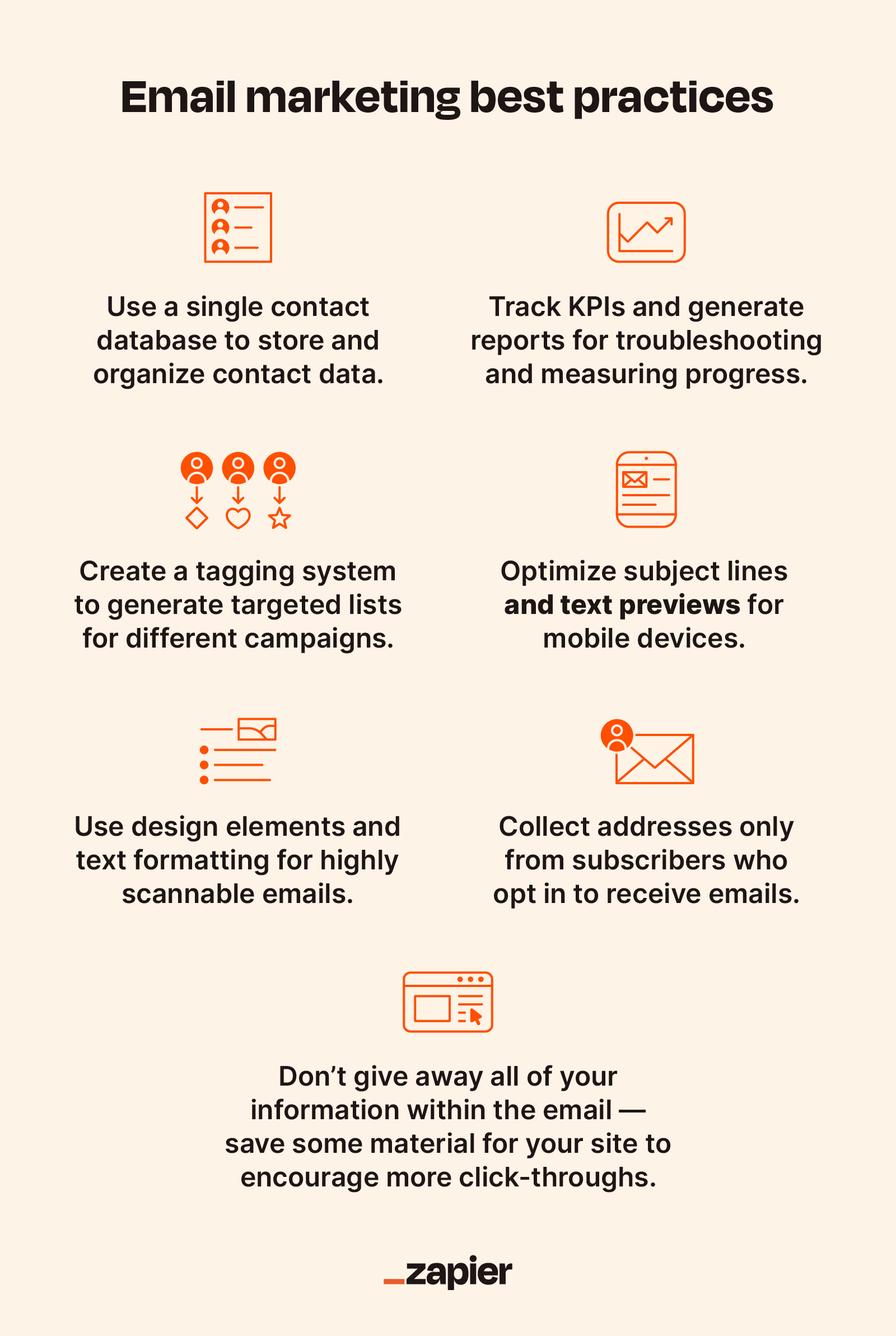
Measure the Success of Your Email Marketing Campaigns
Once you’ve built and launched your email marketing campaigns, it’s important to measure their success to see what’s working and what’s not. This will help you make data-driven decisions and optimize your email marketing efforts for even better results.
Here are some key metrics to track when measuring the success of your email marketing efforts:
- Open Rates
Open rates give you a good indication of how well your email subject lines are performing and how engaged your target audience is with your emails. The higher your open rates, the more successful your email campaigns are likely to be.
- Click-Through Rates
Click-through rates show you how many people are taking action after receiving your emails, such as clicking on links or making purchases. The higher your click-through rates, the more successful your email campaigns are likely to be.
- Conversion Rates
Conversion rates show you the percentage of people who complete a desired action after receiving your emails, such as filling out a form or making a purchase. The higher your conversion rates, the more successful your email campaigns are likely to be.
- Bounce Rates
Bounce rates show you the number of emails that could not be delivered to your target audience. The lower your bounce rates, the more successful your email campaigns are likely to be.
- Unsubscribe Rates
Unsubscribe rates show you the number of people who are choosing to unsubscribe from your email list. The lower your unsubscribe rates, the more successful your email campaigns are likely to be.
Importance of Data Analysis in Refining Your Strategy
Data analysis is a crucial component of refining and optimizing your email marketing strategy. By analyzing the data generated by your email marketing campaigns, you can gain valuable insights into what’s working and what’s not, and make data-driven decisions to improve your results.
Here are some key benefits of data analysis in refining your email marketing strategy:
Identifying Trends
Data analysis can help you identify trends and patterns in your email marketing campaigns, such as which subject lines generate the highest open rates, or which days of the week tend to produce the best results.
Improving Targeting
By analyzing data on who is opening your emails and taking action, you can better target your audience and improve the relevance of your emails.
Refining Your Content
Data analysis can help you understand what types of content resonate with your target audience and which types don’t. This information can help you refine your content strategy and create more compelling email campaigns.
Optimizing Timing and Frequency
By analyzing data on when your emails are being opened and when conversions are occurring, you can optimize the timing and frequency of your emails for even better results.
Increasing Engagement
Data analysis can help you identify the elements of your emails that are driving engagement and the elements that are not. You can use this information to make improvements and increase engagement over time.
Best Email Marketing Software and Tools
When choosing an email marketing tool, it’s important to consider your specific needs and goals. Whether you’re looking for a simple tool to send out newsletters, or a more advanced platform to execute a comprehensive inbound marketing strategy, there’s an email marketing tool out there that’s right for you.
Here are some of the most common email marketing software and tools that can help you achieve your goals:
Mailchimp
Mailchimp is a popular email marketing tool that offers a variety of features, including email design templates, email automation, list management, and more.
Hubspot
Hubspot is a comprehensive inbound marketing platform that includes email marketing features, along with other tools for lead generation, content management, and more.
ActiveCampaign
ActiveCampaign is an all-in-one marketing platform that includes email marketing features, along with automation, CRM, and e-commerce capabilities.
ConvertKit
ConvertKit is an email marketing platform specifically designed for bloggers and content creators, with features including automation, email design templates, and more.
GetResponse
GetResponse is an email marketing platform that offers a wide range of features, including automation, email design templates, and more, making it an easy-to-use solution for businesses of all sizes.
Best Practices for how can email marketing fuel your overall inbound strategy
To get the most out of your email marketing efforts, it’s important to follow best practices that will help you achieve your goals. Here are some key practices to keep in mind as you build and execute your email marketing campaigns:
How to Ensure Your Emails are Delivered
- Get permission
The first step in ensuring your emails are delivered is to get permission from your subscribers. Make sure they opt-in to receive your emails and provide a clear way for them to unsubscribe if they want to.
- Use a reputable email service provider
Using a reputable email service provider (ESP) will help ensure that your emails are delivered to your subscribers’ inboxes. Look for an ESP that has a good reputation for delivering emails and avoiding spam filters.
- Keep your list clean
Keeping your email list clean and up-to-date is key to ensuring that your emails are delivered. Make sure to remove inactive subscribers, hard bounces, and invalid email addresses regularly.
- Use a double opt-in process
You can consider using a double opt-in process, where subscribers confirm their subscription via a separate email. This way you can ensure that only interested people in your content receive your emails.
- Monitor your sender’s reputation
Your sender’s reputation is an important factor in email deliverability. Make sure you’re monitoring your reputation and taking steps to maintain it, such as keeping your list clean and following email best practices.
How to Avoid Spam Filters
- Don’t use misleading or false information
Using misleading or false information in your emails, such as a fake “from” name or subject line, is a surefire way to get your emails flagged as spam.
- Don’t use all caps or excessive punctuation
Using all caps or excessive punctuation in your subject line or email body triggers spam filters and your emails end up in spam box.
- Don’t use trigger words
Certain words and phrases, such as “earn money fast” or “limited time only,” trigger spam filters. Avoid using spammy types of words and phrases in your emails.
- Don’t include too many links
Including too many links in your emails can also trigger spam filters. Limit the number of links in your emails and make sure they are relevant and useful to your subscribers.
- Test your emails
Before you send out an email, make sure to test it using a spam checker tool to see if it will trigger any spam filters. This will give you a chance to make any necessary changes before you send it to your subscribers.
Importance of Mobile Optimization
- Increased email engagement
Mobile phones are the new working norm. Most people check their emails on the go. Optimized emails for mobile help increase engagement and improve the overall experience for your subscribers.
- Better deliverability
Emails that are not optimized for mobile are more likely to be marked as spam or deleted without being opened. By optimizing your emails for mobile, you’ll improve deliverability and increase the chances of your emails being seen and acted upon.
- Improved conversion rates
Optimizing your emails for mobile can also improve conversion rates by making it easier for subscribers to take action on their smartphones. Make sure you optimize your emails for both the size of the screen and the touch interface.
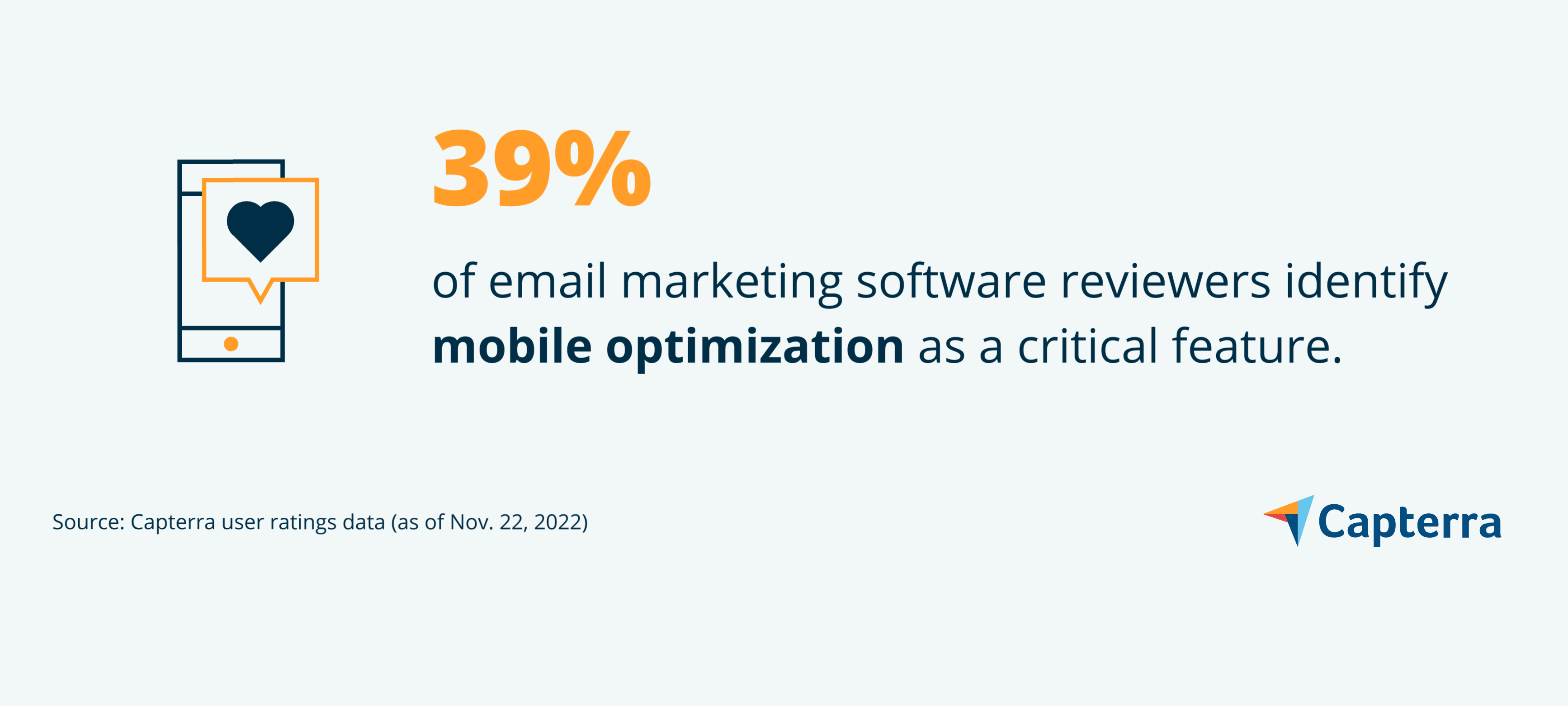
Hot FAQs
What does it mean to create an inbound email marketing strategy?
Creating an inbound email marketing strategy involves sending personalized and relevant emails to attract and engage your audience, typically by offering valuable content or promotions.
This approach focuses on building trust and long-term customer relationships through permission-based communication, ultimately driving conversions and brand loyalty.
What are the golden R’s of email marketing?
The golden R’s of email marketing are:
- Relevance: Ensure your emails are tailored to the recipient’s interests and needs.
- Respect: Obtain consent and follow best practices, like honoring unsubscribe requests.
- Response: Aim for engagement, measuring open rates, click-throughs, and conversions to refine your strategy.
What is CRM strategy email?
A CRM strategy email refers to an email communication sent as part of a Customer Relationship Management (CRM) strategy. These emails are designed to nurture and maintain relationships with customers, often including personalized content, product recommendations, or special offers to enhance customer loyalty and drive repeat business.
What is B2B email marketing?
B2B email marketing is a strategy used by businesses to promote their products or services to other businesses. It involves sending targeted emails to a specific audience of business professionals or decision-makers, with the goal of generating leads, nurturing relationships, and ultimately driving B2B sales and partnerships.
Is email marketing still an effective strategy?
Yes, email marketing remains a highly effective strategy. It offers a strong return on investment, allows for personalized and targeted messaging, and is a direct channel for engaging with your audience. When executed well, email marketing can drive conversions, nurture leads, and build lasting customer relationships.
Wrapping up
How can email marketing fuel your overall inbound strategy? Email marketing and inbound marketing are a match made in heaven!
Integrating email marketing into your inbound strategy can give your marketing efforts a major boost, helping you reach your target audience, generate leads, and drive conversions. It’s like adding rocket fuel to your marketing engine!
So, what are you waiting for? With email marketing in your inbound arsenal, you’re well on your way to seeing some fantastic results. Give it a try and see for yourself just how powerful email marketing can be. Trust us, your business will thank you!


